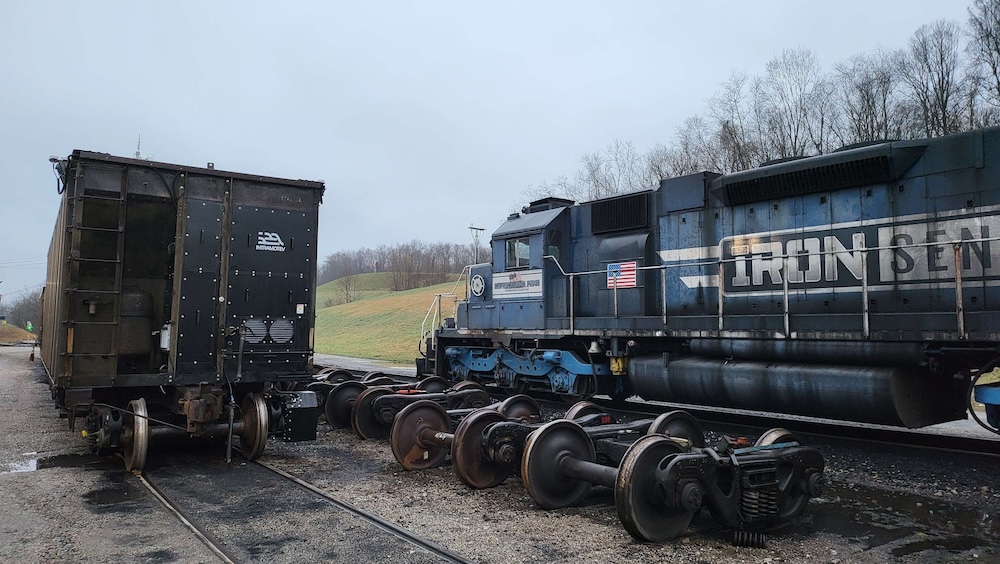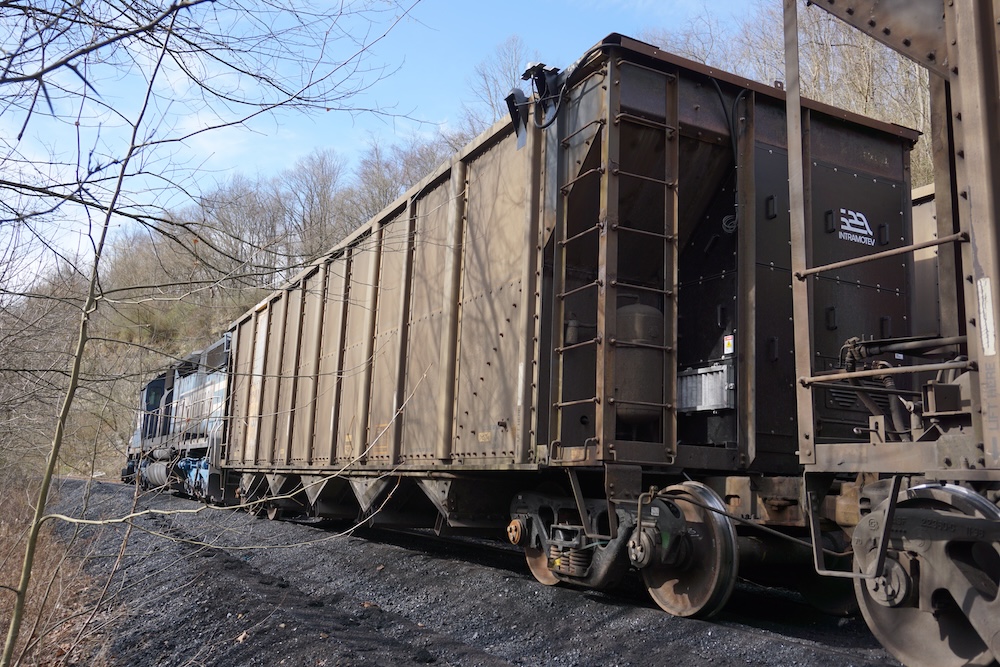
ST. LOUIS – Intramotev, which is converting standard freight cars into autonomous rail vehicles, says it has successfully deployed the world’s first self-propelled battery-electric railcar in a traditional freight train.
In what Intramotev called a major step forward for sustainable freight transportation, the company’s ReVolt hopper has run more than 1,000 miles making trips between Iron Senergy’s Cumberland Mine in Waynesburg, Pa., and its Alicia Harbor barge loading terminal.
The 17-mile private line is isolated from the national rail network and is not subject to Federal Railroad Administration regulations.
To charge its batteries, the ReVolt collects energy from braking. The captured and stored electricity is used to power traction motors, essentially turning the car into part of the locomotive consist in a traditional train with an engineer at the controls. The ReVolt helps reduce the train’s fuel consumption.
“We’re excited to deliver the fuel savings and environmental benefits of the ReVolt to our customer Iron Senergy,” Intramotev CEO Tim Luchini said in a statement. “Today’s news marks an important milestone in our work to decarbonize mining and freight transportation, and we’re just getting started.”
Later this year, Intramotev will deploy its locomotive replacement, known as the TugVolt, at a calcium mine in Northern Michigan. The TugVolt can move itself and several cars to provide first and last mile service autonomously.
“We’re thrilled to have partnered with Intramotev to deploy their forward-thinking technology,” Iron Senergy CEO and owner Justin Thompson said in a statement. “We’re always searching for ways to double down on our commitment to innovation and sustainability, and this partnership helps accomplish that in a big way.”















Belt and pulley is a bad idea. I had to try to get a machine to work accurately in a factory with a similar type of system. It would never respond the same way twice. Not desirable on on a railroad.
Glad to have some positive news coming out about the Cumberland Mine, after all the media drama in the last week about its supposed closure. That story never made much sense to begin with, and this just adds another piece to Iron Senergy’s growing reuse of mine assets that had been written off by larger companies.
This RR has a track maintainer named Dave that uploads videos to YouTube. Very interesting view of the short line and the work being done to maintain it. Not sure my posting the site name would be allowed so my suggestion would be to look up the railroad name and you’d likely find what I am referring to. Very educational and entertaining.
I’m trying to vaguely recall years ago that TRAINS’ past iconoclast engineer, John Kneiling, proposed that every piece of railroad rolling stock should have it’s own traction motors. Anyone else remember that???
Yes, I remember that. The cover art depicted a cab on a freight car…
I posted an idea like this here on trains.com many years ago.
Why not a belt and pulley turning a generator as the car moves?
I am not sure, but I think that a belt and pulley would consume at least as much energy as it would create, perhaps more through losses of friction. The advantage of the regenerative braking power collection is that it adds braking force while creating energy.